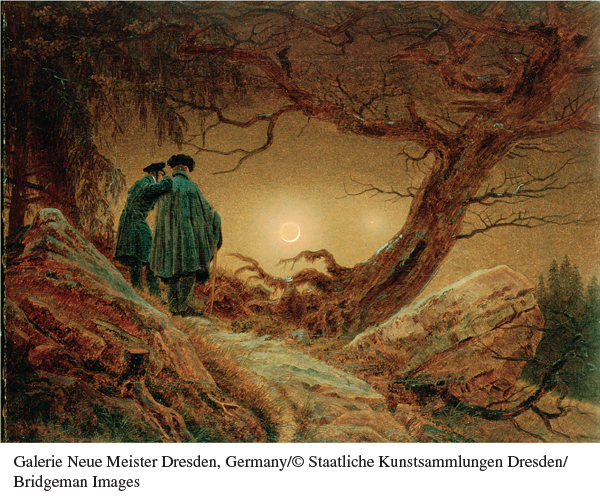A History of Western Society AP®: Printed Page 648-g
CONCEPT 3.6
Romanticism, Realism, and Relativism
In the early nineteenth century some writers, artists, and composers broke with the Enlightenment emphasis on reason and the controlled style of classicism to create Romanticism, a movement characterized by emotional exuberance, unrestrained imagination, and a fascination with nature and the exotic. Romanticism and nationalism often reinforced one another as Romantics championed their own people’s history and destiny and emphasized the importance of culture and language. In the 1840s many artists and writers turned from the soaring and emotional viewpoint of Romanticism to Realism, seeking to depict life as it really was, including the gritty effects of industrialization and many previously taboo subjects, such as sex and domestic violence. Realists sought to apply what they saw as scientific objectivity to their observations of the world, and many other people as well came to think that science was the only reliable route to truth and objective reality. Research in the natural and social sciences led to advances in chemistry, physics, and biology, and also to direct challenges to traditional beliefs, including Darwin’s idea of evolution by natural selection, which was applied by other thinkers to the human race to justify imperialism as the “survival of the fittest.” Toward the end of the nineteenth century, some philosophers rejected the general faith in human reason, arguing that life was meaningless or that intuition and the subconscious were more important than scientific thinking for understanding reality. Freud developed a view of the human psyche that saw behavior as basically irrational, and Einstein postulated that time and space are relative to the viewpoint of the observer. Both of these insights challenged the idea that the world was objectively knowable and stable. Creative artists also rejected old forms and old values, creating modernism in which they turned their backs on figurative representation and developed more abstract kinds of expression. (Pages 697–
